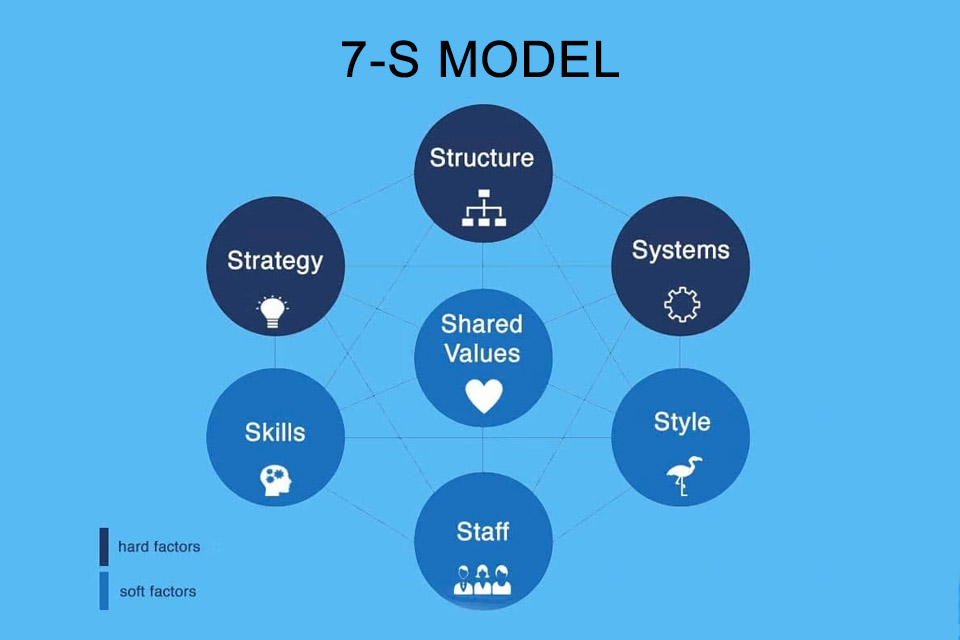What is the 7-S Model?
Smartpedia: The 7-S model examines companies based on 7 success factors: Structure, Strategy, Systems, Skills, Staff, Style and Shared Values.
7-S Model – the 7 success factors of an organisation
The 7-S model divides an organisation into 7 elements, which are essential for the success of an enterprise. The model was developed by Tom Peters, Robert Waterman Jr. and Julien Philips, as well as Tony Athos and Richard Pascale. Since the authors worked for the management consultancy McKinsey, the model is also referred to as McKinsey 7S Framework or McKinsey 7-S Model.
The 7-S model is used to analyse organisations in order to identify and evaluate changes. The 7S stand for:
- Structure: The structure defines the hierarchy / organisational structure of a company, often visualised by means of an organisation chart.
- Strategy: The strateg” tries to generate sustainable competitive advantages.
- Systems: Processes, workflows, tools and tools are understood as systems.
- Skills: The capabilities or special skill” of a company as a unit – also referred to as corporate skills.
- Staff: The employees or permanent staff of the organisation.
- Style: The corporate culture as the basis for successful cooperation within the organisation.
- Shared Values: The mission statement or self-image of a company with values that should be shared by as many employees as possible. This is also referred to as corporate identity.
Hard and soft factors in the 7-S model
The success factors of the 7-S model can be divided into
- “hard factors” (strategy, structure, systems) and
- “soft factors” (skills, staff, style, shared values).
Alternatively, there is also talk of a “cold triangle” and a “warm square”. When applying the 7-S model, it is important to recognize that a change in one factor always has an effect on the other factors. This applies both to the use in company analysis and to the definition of strategies; when choosing a strategic measure, concrete steps can ideally be defined in the remaining areas.
Impulse to discuss
From what size of company is it sensible to consider the 7-S model and its success factors? And since it was already developed in the 1970s, can it still be applied today?
Notes:
If you like the article or would like to discuss it, please feel free to share it in your network. And if you have any comments, please do not hesitate to send us a message.
Here you can find more information about the 7-S model.
And here you will find additional information from our t2informatik Blog:



